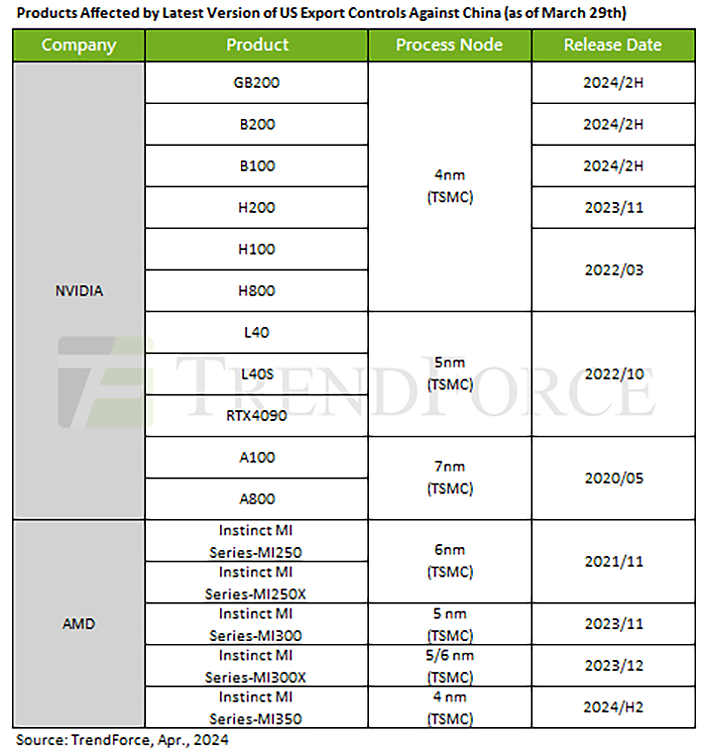Could The US Chip Ban Backfire? What It Means For China's AI Ambitions

The US government recently tightened its restrictions on chip exports in an effort to make it more difficult for China to access artificial hardware and services, all in the interest of national security. However, the restrictions could prove "insignificant" in the short term, and even worse, could actually boost China's efforts to develop AI chips in the long run, according to a TrendForce report.
TrendForce says the expanded rules took effect last week (April 4, 2024) with the intention of preventing certain countries from circumventing existing US restrictions. While not specifically referenced in the report, the rules follow the release of NVIDIA's gimped GeForce RTX 4090D graphics card for the Chinese market, which features fewer CUDA cores compared to the regular GeForce RTX 4090 (14,592 versus 16,834), fewer RT cores (114 versus 118), fewer Tensor cores (456 versus 512), and a scaled down total graphics power (TGP) of 425W (versus 450W).
Incidentally, it was later discovered that the GeForce RTX 4090D could be overclocked to bring performance closer to its non-gimped counterpart, though it's not clear how much parity that could bring in the AI department—after all, overclocking doesn't make more CUDA, Tensor, and RT cores magically appear.

In any event, TrendForce says the expanded export controls add more AI chips to the banned list. The original ban restricted parts such as NVIDIA's A100/H100, A800, H800, L40, L40S, and GeForce RTX 4090, as well as AMD's MI250 and MI300 series. The expanded ban adds more chips to the mix, including NVIDIA's H200, B100, B200, and GB200, and AMD's MI350 series.
Chip makers have responding by developing cut-down versions for export, some of which include NVIDIA's H20, L20, and L2 products. However, TrendForce is skeptical that the revised export rules will have the intended effect.
"In the long run, while the US intends to block China's access to and development of advanced technologies, these measures may inadvertently speed up China's progress in developing AI chips and advanced manufacturing processes. In seeking technological superiority, the US's latest efforts might paradoxically fuel the advancements it seeks to hinder," TrendForce states.
It's an interesting perspective and we wish that TrendForce would have gone into more detail into its report. All it really states, however, is that the revised export controls are primarily intended to plug regulatory loopholes "rather than creating new significant barriers."
While that might be the case, the situation remains fluid—the US government could (and probably will) issue more revisions as the need arises, and pending what impact the current export rules end up having.

